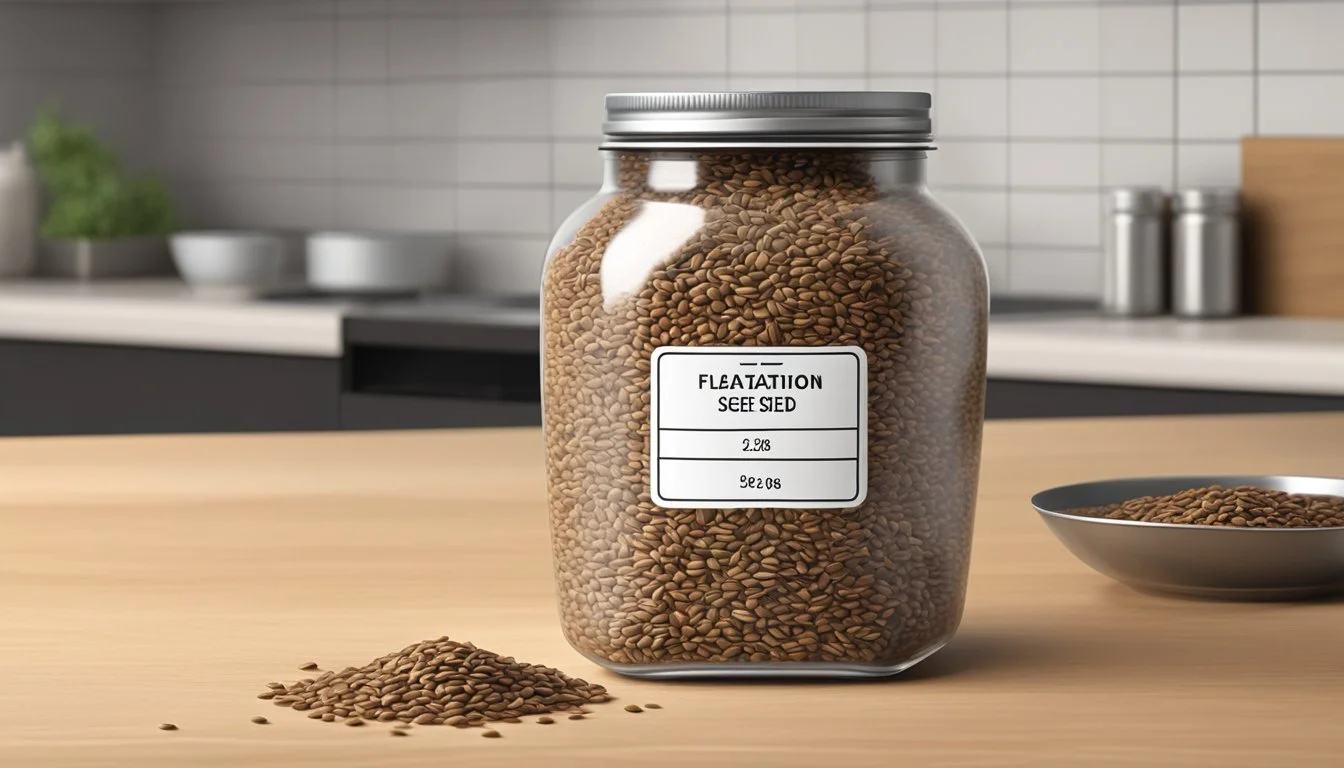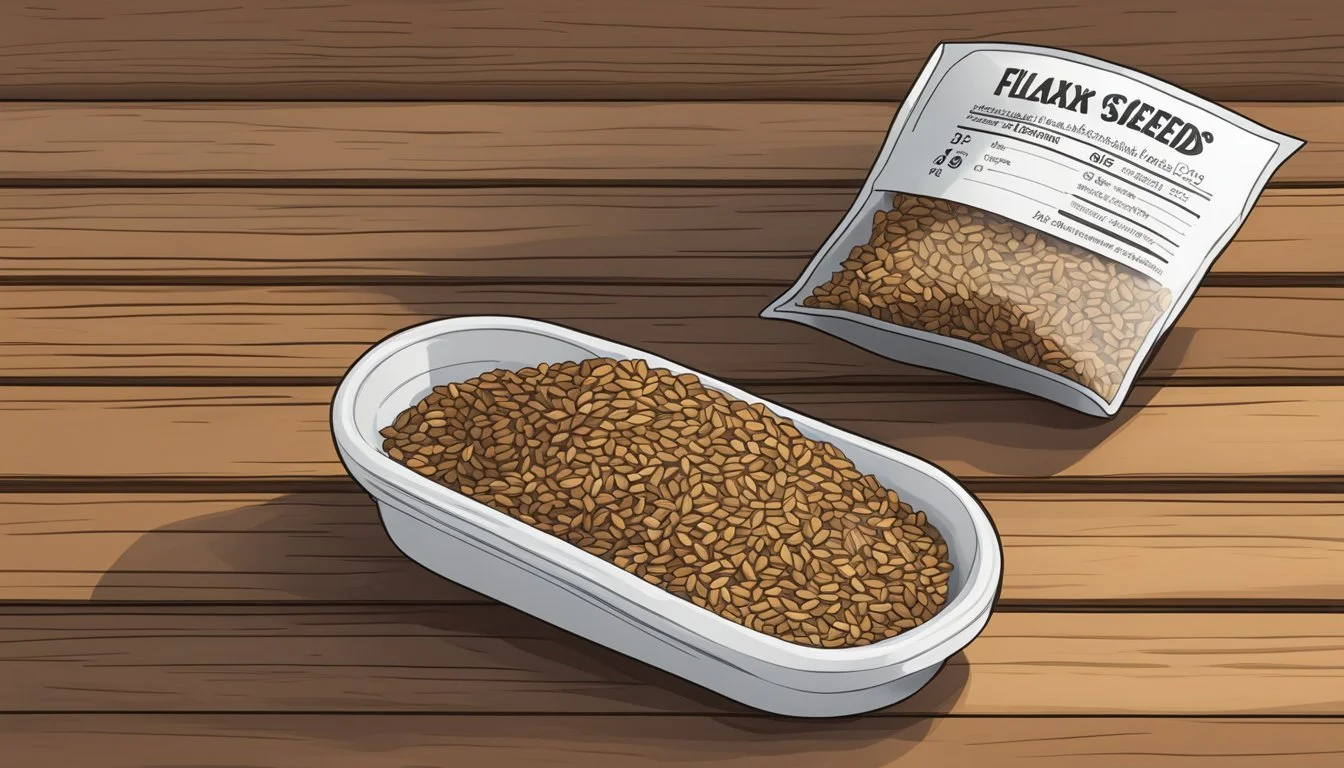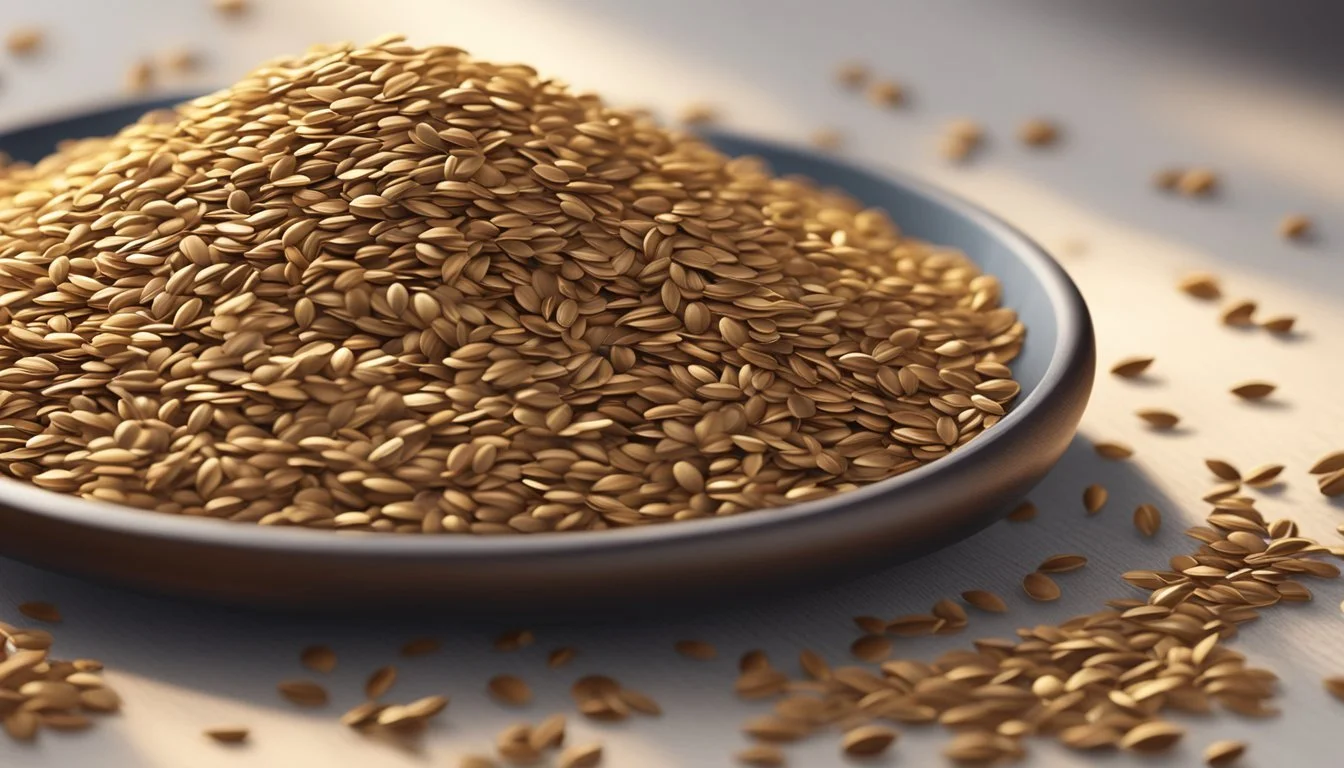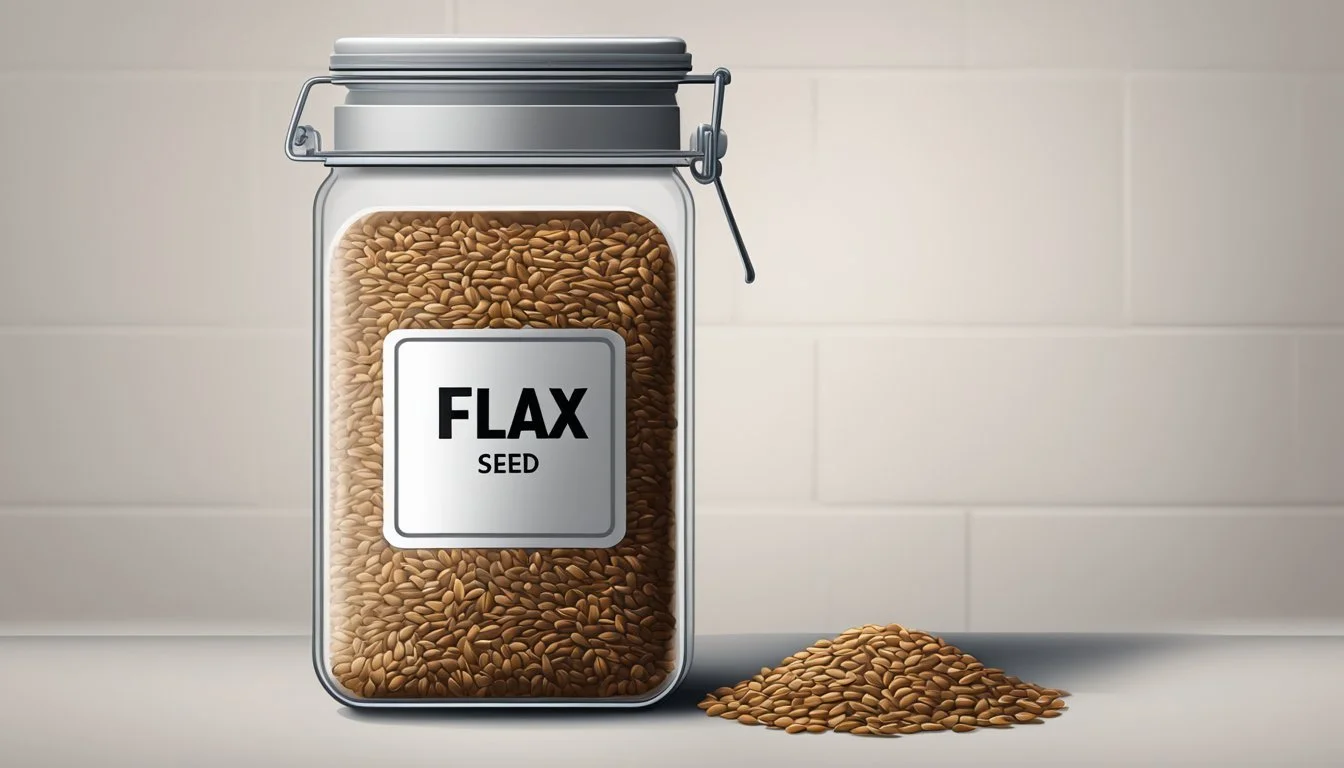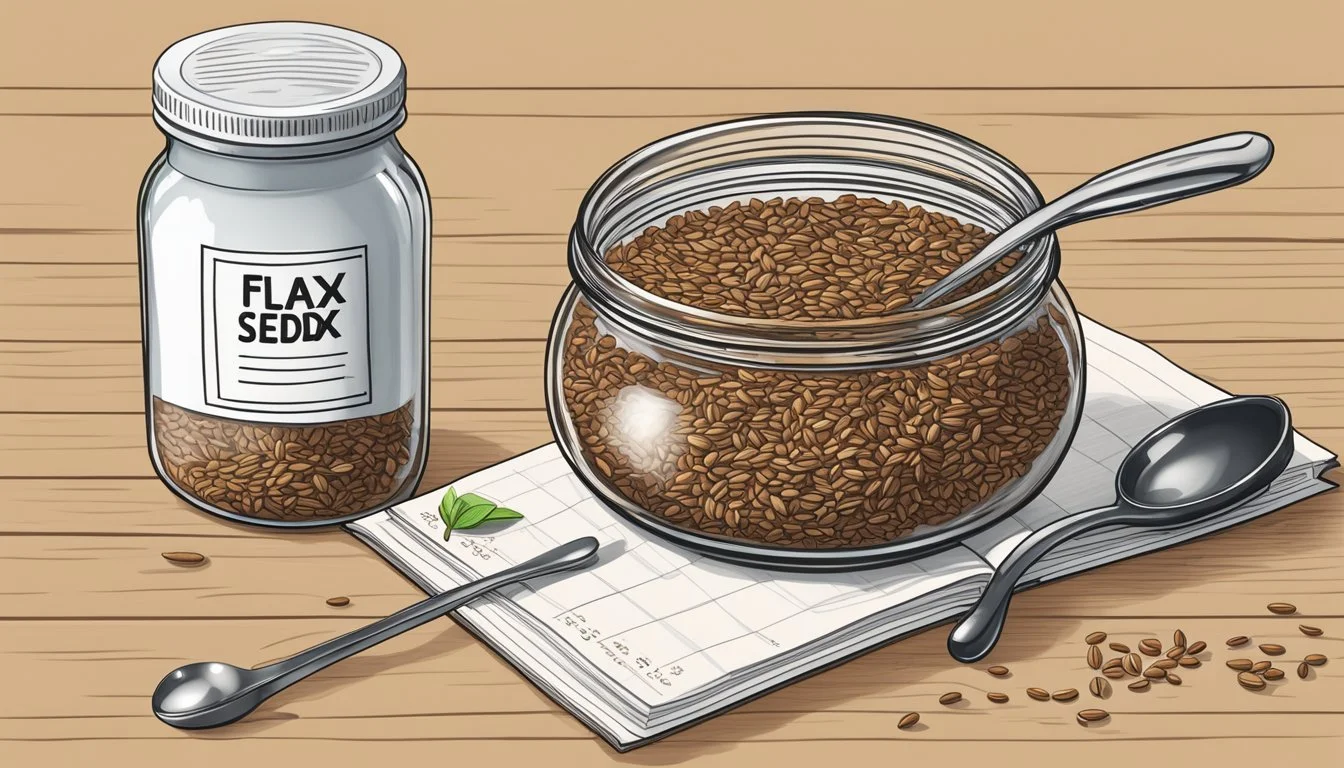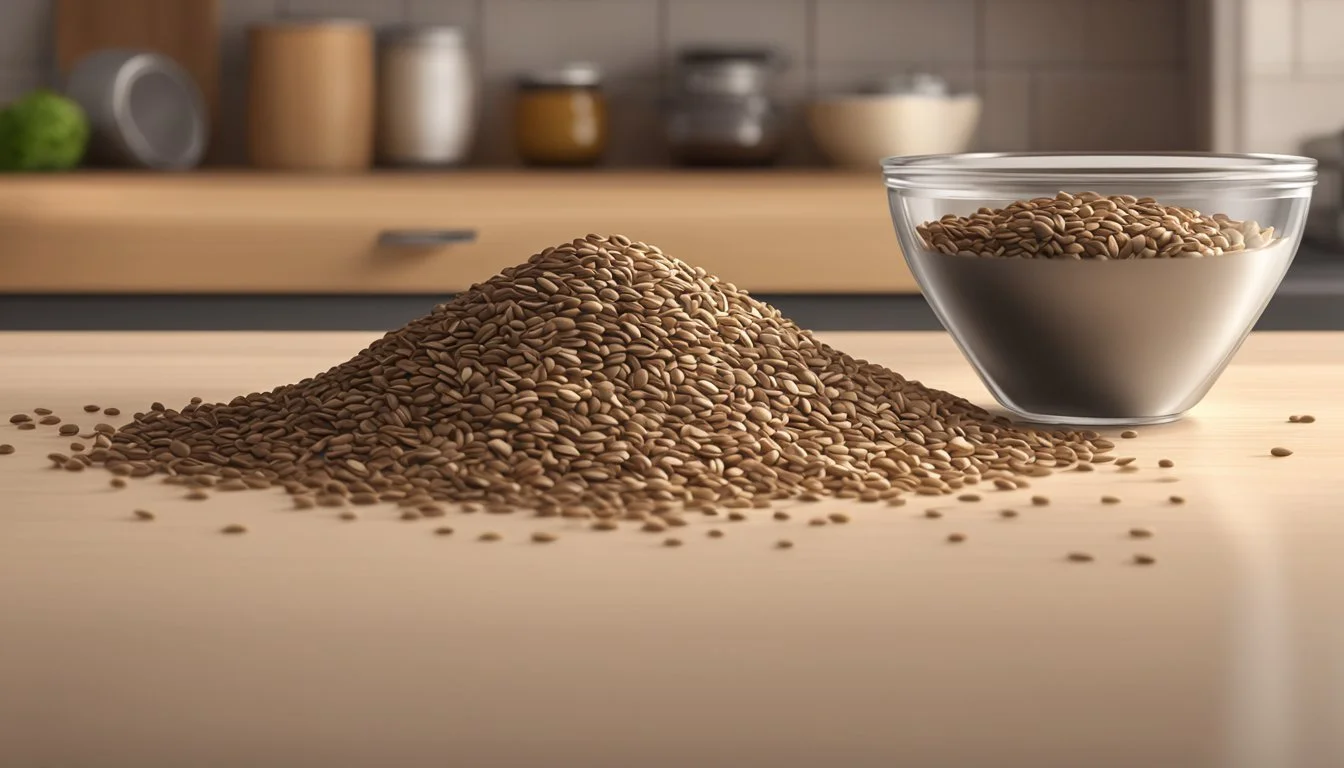Does Flax Seeds Go Bad?
Understanding Shelf Life and Storage
Flax seeds, known for their numerous health benefits, do have a shelf life. While they are rich in omega-3 fatty acids, fiber, and protein, these nutrients also make them susceptible to spoiling. Proper storage is crucial to maintain the freshness of flax seeds and extend their usability.
Whole flax seeds can typically be stored at room temperature for up to 10 months. Ground flax seeds, on the other hand, have a much shorter shelf life of about 4 months at room temperature due to the lack of a protective layer. Storing them in a cool, dark place, such as a refrigerator, is recommended to prolong their freshness.
A tell-tale sign that flax seeds have gone bad is an off-putting sour odor or a bitter flavor. When these signs are present, it’s best to discard the seeds to avoid any adverse effects. Proper handling and storage conditions can make a significant difference in preserving the nutritional value of flax seeds.
Nutritional Profile of Flax Seeds
Flax seeds offer a rich source of essential nutrients, including essential fatty acids, dietary fiber, and protein. They also contain vitamins and antioxidants which contribute to overall health benefits.
Essential Fatty Acids
Flax seeds are renowned for their high omega-3 fatty acid content. Specifically, they are rich in alpha-linolenic acid (ALA), an essential fatty acid that supports cardiovascular health.
One tablespoon of whole flax seeds contains approximately 1,597 mg of ALA. This makes them an excellent plant-based source of omega-3s, which are important for reducing inflammation and promoting heart health.
In addition to omega-3s, flax seeds also contain omega-6 fatty acids, though in smaller amounts. Together, these polyunsaturated fats help maintain balanced cholesterol levels and support brain function.
Dietary Fiber and Protein Content
Flax seeds are a great source of dietary fiber, which is crucial for digestive health. They offer both soluble and insoluble fiber, aiding in bowel regularity and helping to prevent constipation.
Fiber Content (per tablespoon):
Total Fiber: 2.8 grams
Soluble Fiber: Approx. 20-40% of the total fiber
Flax seeds are also notable for their protein content. They contain about 1.9 grams of protein per tablespoon, making them a valuable plant-based protein source for vegetarians and vegans. This protein is essential for tissue repair and muscle growth.
Vitamins and Antioxidants
Flax seeds contain several essential vitamins, notably vitamin B1 (thiamine) and vitamin B6. Thiamine is important for energy metabolism and nervous system function, while vitamin B6 plays a role in protein metabolism and cognitive development.
Flax seeds are also a good source of lignans, plant compounds with antioxidant properties. Lignans can help protect cells from oxidative stress and may have estrogen-like effects, contributing to hormonal balance.
In addition, flax seeds provide small amounts of other antioxidants such as vitamin E, which is important for skin health and immune function.
Factors Affecting Flax Seed Shelf Life
Flax seeds are sensitive to various environmental factors that significantly impact their shelf life. Proper storage is essential to maximize their freshness and nutritional value.
Impact of Light and Heat
Exposure to light and heat can drastically reduce the shelf life of flax seeds. Light can cause flax seeds to oxidize, leading to rancidity. Storing flax seeds in a dark, cool place is advisable to ensure they remain fresh. Heat accelerates the degradation of the delicate oils in flax seeds. Avoid keeping them near heat sources like stoves or microwaves. Flax seeds should ideally be stored in a pantry or refrigerator to protect them from these elements.
Oxygen and Moisture Exposure
Flax seeds are vulnerable to oxygen and moisture, which can accelerate spoilage. Oxygen exposure leads to oxidation, turning the seeds rancid. Keeping flax seeds in airtight containers minimizes contact with air. Moisture can encourage mold growth and spoilage, rendering the seeds inedible. Therefore, flax seeds should be stored in a dry environment, with containers that seal tightly to prevent moisture ingress. Refrigeration can also help in controlling moisture levels.
Whole vs. Ground Flax Seeds
The form of the flax seed—whole or ground—also affects its shelf life. Whole flax seeds have a natural protective shell that helps them stay fresh for up to one year or more when stored properly. Ground flaxseed, or flaxseed meal, is more susceptible to spoilage due to the broken shells exposing the oils to air and light. Ground flaxseed should be used within a few months and stored in the refrigerator to extend its shelf life.
Proper storage is crucial to maximizing the shelf life and nutritional benefits of flax seeds.
Proper Storage Solutions
Ensuring that flax seeds are stored correctly can significantly extend their shelf life and preserve their nutritional benefits. Key strategies include using suitable containers, refrigeration, and freezing.
Suitable Containers for Storage
Flax seeds should be stored in airtight containers to prevent air exposure, which can lead to spoilage.
Opaque containers are recommended to block light, further protecting the fragile fats in flax seeds.
Mason jars or vacuum seal bags can be effective. Keeping flax seeds in their original packaging might work, provided it seals well.
Avoid transparent containers for long-term storage in the pantry. For short-term use, a dry and cool place like a cupboard can suffice, as long as the container is sealed properly.
Refrigeration Benefits
Refrigerating flax seeds can extend their shelf life by several months.
The cool temperature of the refrigerator slows down the oxidation process. To best utilize refrigeration, place flax seeds in airtight containers before refrigerating.
Ensure they are kept away from fruits and vegetables, as the moisture from these can lead to mold. Regularly check for any signs of spoilage.
Refrigerated flax seeds should still be consumed within a few months for the best quality, even in ideal conditions.
Freezing for Long-Term Preservation
For those looking to store flax seeds for more extended periods, the freezer is an excellent option.
Freezing can keep flax seeds fresh for up to a year. Again, it is crucial to use airtight containers or vacuum seal bags to prevent freezer burn and moisture exposure.
Ensure the flax seeds are dry and cool before sealing and placing them in the freezer.
Ground flax seeds can also be frozen effectively. Label the containers with dates to track how long they have been stored.
Identifying Spoilage in Flax Seeds
Knowing how to detect spoilage in flax seeds is crucial to avoid consuming rancid or contaminated products. This section details how sensory cues and visible contaminants can signal that your flax seeds have gone bad.
Sensory Clues of Rancidity
Fresh flax seeds should have a mild, nutty aroma. If the seeds emit an unpleasant odor such as sourness or rancidity, they are likely spoiled. Oxidation of the omega-3 fatty acids in flax seeds can cause a sour or rancid smell.
Taste is another indicator of rancidity. Fresh flax seeds have a slightly nutty flavor. If the seeds taste bitter or off, do not consume them. These sensory changes are often due to the breakdown of fats upon exposure to air and moisture.
Visible Mold and Contaminants
Check flax seeds for visible mold or other contaminants. Mold growth is typically blue or green and indicates that moisture has infiltrated the packaging. Dispose of any seeds showing signs of mold immediately to prevent ingesting harmful spores.
Discoloration is another sign of spoilage. Healthy flax seeds are usually uniformly brown or golden. Any significant color change, such as dark spots or a dull appearance, could signify contamination or excessive moisture.
Keep an eye out for unusual particles or foreign substances within the flax seeds, as these can be harmful if ingested. Proper storage in an air-tight container in a cool, dry place helps maintain the quality of flax seeds.
Usage Tips for Flax Seeds
Grinding flax seeds can ensure maximum freshness and nutritional benefits. They can be incorporated into various recipes and even used as vegan alternatives in cooking and baking.
Grinding Flax Seeds for Freshness
Grinding flax seeds just before use is vital for preserving their oils and nutrients. Whole seeds have a longer shelf life but don't release their full nutritional potential until ground.
Using a coffee grinder or a dedicated seed grinder helps achieve a fine consistency. Lightly toasting the seeds before grinding can also enhance their nutty flavor. Store the ground flaxseed meal in an airtight container, preferably in the refrigerator, to maintain freshness.
Incorporation into Recipes
Flax seeds can easily be added to many daily recipes. Adding a tablespoon to smoothies, yogurt, oatmeal, or baked goods can boost dietary fiber and omega-3 fatty acids.
Substituting flour with ground flaxseed in bread recipes adds a richer texture and nutty taste. For a balanced diet, consider sprinkling flaxseed meal over salads or incorporating it into pancake and muffin batters.
Flax as Vegan Alternatives
Flax seeds serve as an excellent vegan substitute in many recipes. To create a vegan egg substitute known as a flax egg, mix one tablespoon of ground flaxseed with three tablespoons of water and let it sit for a few minutes until it thickens.
This mixture can replace eggs in baking recipes like cookies or brownies. Flaxseed eggs can be particularly useful in vegan or allergen-free cooking, maintaining the binding properties needed without using animal products.
Flax seeds are versatile in vegan recipes, enriching both savory and sweet dishes.
Understanding Expiration Dates
Flax seeds have a limited shelf life influenced by their storage conditions and packaging. Knowing the difference between expiration dates and best by dates helps in determining freshness and safety.
Expiration vs Best By Dates
Expiration dates indicate the last date a product is considered safe to consume. Beyond this date, the risk of spoilage increases significantly. Best by dates suggest when the product is at its peak quality and flavor, rather than a safety deadline.
For flax seeds, these dates can differ. Whole flax seeds generally have a longer shelf life compared to ground flax seeds. Proper storage, like refrigeration, extends their freshness, but paying attention to these dates ensures you're consuming them at their best.
Knowing When to Discard
Discard flax seeds if they develop an off-putting sour odor or become bitter. Ground flax seeds spoil faster, sometimes within a week after the best by date. Smell and taste tests are effective methods for determining rancidity.
Safe storage practices—such as keeping them in airtight containers and refrigerating ground flax seeds—can prevent early spoilage. If you're unsure about their freshness, err on the side of caution and dispose of them to avoid potential health risks.
Health Considerations
Flax seeds are a potent source of omega-3 fatty acids and dietary fiber. Yet, they can also cause digestive discomfort and may require consulting a nutritionist for personalized advice.
Potential Digestive Discomfort
Flax seeds provide significant fiber, which can improve digestion.
Nevertheless, consuming too much fiber can lead to bloating, gas, and stomach cramps. The body may need time to adjust to the increased fiber intake.
Omega-3 fatty acids in flax seeds can promote heart health but can also upset the stomach if consumed in large quantities.
Individuals with irritable bowel syndrome (IBS) or other digestive conditions may experience heightened symptoms. It is advisable to start with small amounts and gradually increase the intake to avoid potential digestive issues.
Consulting a Nutritionist
Considering their potent nutritional content, a nutritionist's guidance can be valuable.
Experts can provide personalized recommendations based on one’s health profile. They can help determine the appropriate amount of flax seeds to incorporate into a diet without causing digestive discomfort.
A nutritionist may also recommend how to prepare and consume flax seeds for optimal nutrient absorption. This could include tips on grinding the seeds to improve digestibility and enhance the availability of omega-3 fatty acids.
For those with specific health goals or conditions, a nutritionist's advice ensures flax seeds contribute positively to their overall dietary plan.

